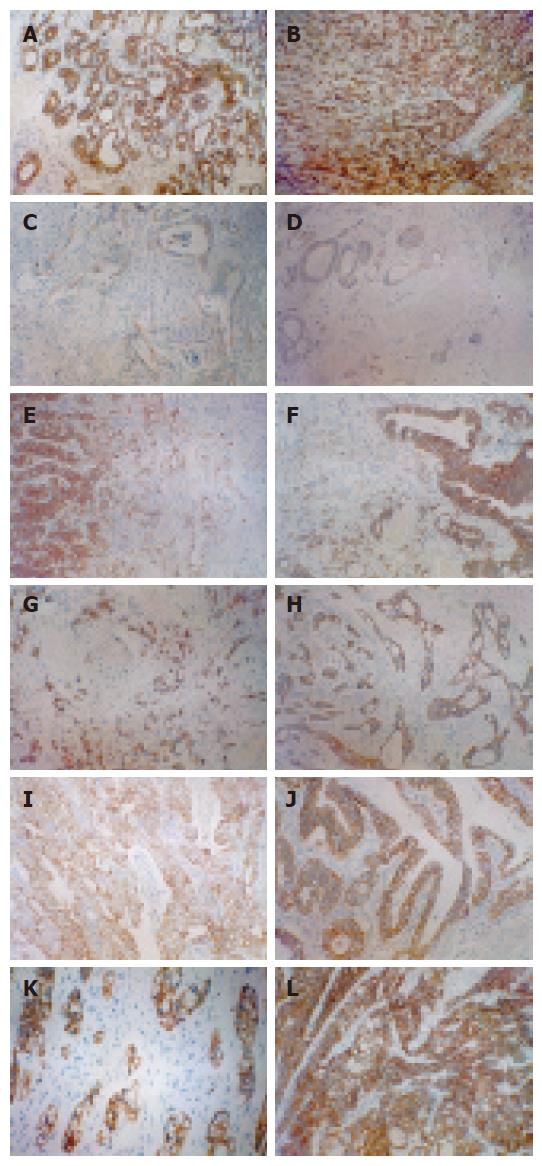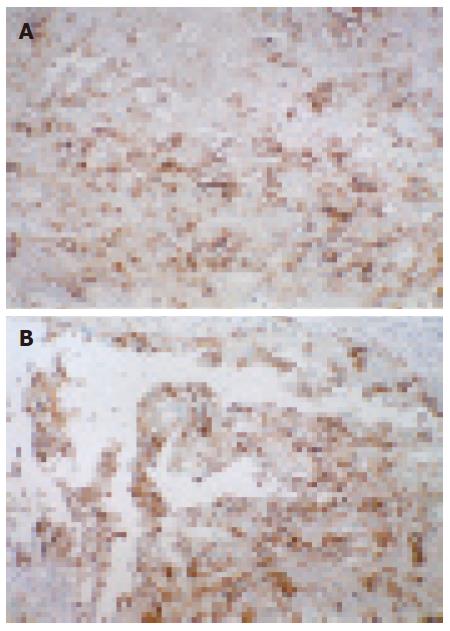Copyright
©2007 Baishideng Publishing Group Co.
World J Gastroenterol. Aug 28, 2007; 13(32): 4321-4327
Published online Aug 28, 2007. doi: 10.3748/wjg.v13.i32.4321
Published online Aug 28, 2007. doi: 10.3748/wjg.v13.i32.4321
Figure 1 The immunohistochemistry picture of E-cadherin in each group.
A: Type of TCM syndrome of SPD, AS II, +++, × 100; B: Type of TCM syndrome of SPD, AS III, +++, × 100; C: Type of TCM syndrome of IBLS, AS II, ±, × 100; D: Type of TCM syndrome of IBLS, AS II, ±, × 100; E: Type of TCM syndrome of IOST, AS III, normal tissue (left) +++, × 100 Carcinoma tissue (right) +, × 100; F: Type of TCM syndrome of IOST, AS II, normal tissue (right) +++, × 100 Carcinoma tissue (left) +, × 100; G: Type of TCM syndrome of YISH, AS II-III, ++, × 100; H: Type of TCM syndrome of YISH, AS II, ++, × 100; I: Type of TCM syndrome of DCSS, AS II, ++, × 100; J: Type of TCM syndrome of DCSS, AS II, ++~+++, × 100; K: Type of TCM syndrome of DOQB, AS II, +++, × 200; L: Type of TCM syndrome of DOQB, AS II, +++, × 100. The two pictures (E and F) show that high expression of E-cadherin in normal tissue, while low expression of E-cadherin in the carcinoma tissue. It suggest it is important for carcinoma development because of the loss of E-cadherin.
Figure 2 The immunohistochemistry picture of ICAM-1.
A: The TCM type of SPD: AS II-III, +++, × 100; B: The TCM type of SPD: ASII-III, +++, × 100.
- Citation: Sun DZ, Xu L, Wei PK, Liu L, He J. Syndrome differentiation in traditional Chinese medicine and E-cadherin/ICAM-1 gene protein expression in gastric carcinoma. World J Gastroenterol 2007; 13(32): 4321-4327
- URL: https://www.wjgnet.com/1007-9327/full/v13/i32/4321.htm
- DOI: https://dx.doi.org/10.3748/wjg.v13.i32.4321










